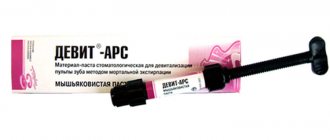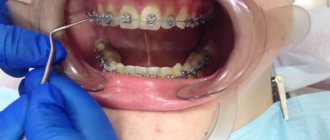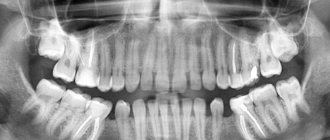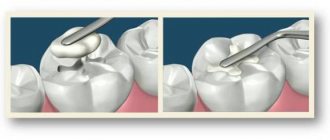Are tampons harmful?
Hygienic products are made from environmentally friendly materials, they are packaged in individual film, so they cannot cause infection or inflammation. It is important to follow the recommendations for use and promptly replace impregnated products to eliminate the likelihood of developing fungal diseases.
Contraindications to the use of tampons are childhood before menarche and the postpartum period, until the menstrual cycle normalizes. If you have doubts about the possibility of using gynecological products, you should consult a gynecologist.
How long can you keep a tampon in?
Let me explain, I didn’t take pregnancy courses, I just listened to various footage on YouTube. I decided to record some fairly useful notes on caring for a newborn.
Newborn care
1. Treatment of the navel 2 r. per day with 3% hydrogen peroxide (moisten a cotton swab with peroxide and blot the navel). Then take 1-2 drops of flucorcin or brilliant green from a pipette. Process until the peroxide sizzles, which means there is still discharge. Do not touch the cotton swab, do not rinse with water and do not take a general bath until healing.
2. Lubricate flaky areas with oil (in the groin, armpits, neck, palms, intergluteal fold, spaces between the fingers). Only if necessary.
3. If there is redness or irritation around the butt due to the diaper, then use a medicinal diaper cream (sudocrem). The rest of the time, or (better) we don’t use regular diaper cream for wrinkles at all, so as not to clog the pores.
4. Let your nails grow up and trim them at 10-14 days, before that you can damage your fingers.
5. If all the skin is peeling, lubricate it with baby cream.
6. After childbirth, meconium passes - black feces (2-3 days), reminiscent of condensed poppy juice. if the meconium has not passed, then you need to tell the doctor.
7. Children do not scream for more than 5-7 minutes without a reason. Reasons for screaming: wants to eat, colic (a common sign is pressing his legs to himself), hot, cold, uncomfortable.
8. The fontanel (divergence of the bones of the skull - an indicator of the condition of the child) should not sink below the bones of the skull and swell; if found, consult a doctor.
9. Stool either after each feeding, or maybe once a day (max. 36 hours, but consult a doctor). Any color up to 1 month is normal. No mucus or blood, but white lumps are normal - due to lactation, goes away after 3-4 months.
10. Small children may develop slight crusts on the eyebrows and buttocks, this is not scary (seborrheic dermatitis). If life gets in the way, then lubricate with oil or wipe, for example, with Ulyazh-emulsion or cream-foam from Mustela.
11. Gain body weight 600 grams per month, then 800.
12. In the maternity hospital they give 2 vaccines. 1 BCG against tuberculosis and antiviral hepatitis B. (can be 3 months).
13. If there is slight discharge from the eyes, use furatsilin solution or chamomile decoction.
14. After birth, the baby’s skin is covered with a cheese-like lubricant of a grayish-white color. In the first few days it is not removed, since this protective film protects the baby’s body from hypothermia and the delicate skin from damage. During your first bath, you can remove this layer with a sterile gauze swab soaked in boiled vegetable oil.
15. There should be no vomiting, and if regurgitation occurs, it should be immediately after eating, and not 3-4 hours later (in this case, it is better to consult a doctor, noting the nature of the regurgitation).
16. In the first 2-3 weeks of life, some newborn boys, due to the influence of maternal hormones, experience swelling of the scrotum - this is a sexual crisis and this is the norm. You can consult your pediatrician. Wash your child more often with a weak, warm solution of potassium permanganate, squeezing it out of a cotton swab.
=================================================================
About temperature
1. Optimal air temperature is 18-19°. But not higher than 21-22°. Newborns are prone to overheating. It is better to have a humidifier; dry air is poorly tolerated by babies.
2. Air humidity 50-70% (to control it is better to purchase a hygrometer)
3. Water 36-37°, reduce the temperature with age, reach 32° by the 3rd month (so that the baby does not relax and fall asleep).
4. We try the shins, nose, if they are cold, then you need to dress warmer. If there is perspiration on your nose or sweat appears, then you need less clothing. Palms and heels are not an indicator of whether the baby is cold or not.
5. Body temperature should be above 36.5-37.9° rectally (injection with oil).
6. Normal temperature with a regular thermometer up to 37.4°.
7. If the temperature at home is above 19°, we don’t wear a hat.
8. There should be no temperature difference after the bath (35 in the bath, 20 at home). If the bath is much hotter, then we bathe the baby with the door open.
9. If your nose is dry (symptoms most often occur when heating a house in cold weather), you need to drip Aquamaris from a pipette. If it grunts or sniffles, in this case we clean it. We don’t put any cotton balls in our noses.
=====================================================================
Bathing
Do not take
general baths until the umbilical wound heals . Under water (preferably boiled), we wash the butt separately, the eyes and ears separately, etc.
2. Bath every day (general after the navel has healed). For the first month, wipe your eyes with a swab of boiled water, then you can wash them. In the maternity hospital we bathe the baby immediately after vaccination the next day.
3. Water 36-37°, reduce the temperature with age, by the 3rd month it should be approximately 32° so that the baby does not relax and does not fall asleep in the bath.
4. There should be no temperature difference after the bath. If the bath is much hotter, then we bathe the baby with the door open.
5. Every time after changing a diaper, I wash it under the tap, for the first month without soap at all.
With soap after 1 month after bowel movement.
6. Ushki _
We rinse with water, but don’t clean, just blot with a cotton pad or towel (we don’t get out the sulfur with “cotton rolls”).
7. Up to 1 month. I wash my hair only with water. Afterwards, use a special gel for washing the hair of newborns.
8. By the age of 3 months, the child must be accustomed to diving; at this time, the breath-holding reflex is developed. It is advisable to bathe him in a large bath with a circle around his neck; this will not teach him to swim, but it will no longer be a simple bath. It is better to go to the pool before 3 months. If we are going to go to the pool, then by this time we must already swim at a temperature of 32 degrees, since the water in the pool is exactly that way.
9. Wash the bathtub, treat it with baby soap or soda (you need to ask your pediatrician, not everyone is allowed). After disinfection, approximately 10 hours should pass.
=====================================================================
Feeding
The breastfeeding regimen is established for 2-3 months.
1. Apply to the breast as soon as possible (preferably in the first half hour, up to 2 hours is possible)
2. Apply to the breast as often as possible (on demand) (almost like sucking a pacifier). The baby loves to suckle even when he doesn’t want to eat; for him it’s a reason to be with his mother.
3. Feeding on demand, there are no restrictions on frequency (the child himself regulates the level of lactation). Never limit food. Do not take the breast until he stops sucking and lets go.
4. Wash your breasts a maximum of 2 times a day, morning and evening; do not feed before feeding, so as not to disturb the microflora.
5. The child sleeps with his parents at night until he is almost a year old. So that at any moment he can lean against his mother (and the mother feels good and the child is calmer). Without co-sleeping, he stops waking him up at night, which is bad, because he often wants to eat at night, but no longer wants to call his mother.
6. As soon as signs of “I want to eat” appear (the back arches, hands are pulled into the mouth, peeing a little, screaming), the breast must be offered.
7. There is no need to pump if there are no contraindications and the baby is nearby (so that exactly as much milk comes in as the baby needs). When sick, express the amount of milk that the baby usually sucks out.
8. In the first 3 hours you need to give 1 breast, the next 3 hours the 2nd, so that the baby receives “top” and “bottom” milk in equal portions. If you give one or the other, the baby will not receive enough “lower” milk. Those. he sucks one and then gives the second.
9. Night feedings are mandatory - they stimulate lactation.4
10. Do not give water instead of milk before introducing complementary foods. Milk contains enough food and water for the baby.
11. After feeding
It is advisable to hold the baby upright so that the air comes out and does not spit up in bed, the exception is if the baby falls asleep during feeding.
12. There should be no vomiting, and if regurgitation occurs, it should be immediately after eating, and not after 3-4 hours (in this case, it is better to consult a doctor, noting the nature of the regurgitation).
13. If there is not enough milk in the 1st breast, give the 2nd. But the next feeding, we give the second breast first, and then the first. (to get equal portions of top, middle and bottom milk)
14. Drink teas for lactation. Drink plenty of water after feeding if there is not enough milk (but no more than 8-10 glasses).
15. We expand the diet gradually to avoid colic. Always consult a doctor if you have any allergies and record what you ate.
=======================================================================
Walking
1. Walk in the 1st month degrees 0 to -2 to 2 weeks, up to 5 weeks to -5, 2-3 months to -10 maximum. From 1 hour to 1.5 hours. 2 times a day is better than 1 time for 3 hours.
2. Use Weather Cream when walking in winter.
3. It is better to use thermal things (Moulene are good), since they are natural. fur can cause allergies. 1 layer of cotton bodysuit, a fleece jumpsuit on top, then a thermal jumpsuit (permissible at -5)
=======================================================================
How often to change a diaper
1. Stool or after each feeding, or maybe once a day (max. 36 hours, but consult a doctor). Any color up to 1 month is normal. No mucus or blood, but white lumps are normal - due to lactation, goes away after 3-4 months.
2. Urinating from 12-14 to 20 times a day.
3. After each urination, wipe with a napkin, and after a month, wipe the butt with odorless soap during stool.
=======================================================================
Dream
1. In the first 2 months, the baby should sleep on his side at night. To do this, we twist 2 diaper rolls (or special pillows) and place them near the tummy and under the back, changing the sides. Can only sleep on its stomach during the day under supervision.
2. No pillow needed. None.
3. Sleep either in a diaper, or even better without a diaper on the diaper, but without reusable changing panties (diapers retain liquid, causing more irritation)
4. In the first 3-4 months, it is advisable for the baby to sleep with his mother, since at this time he especially needs the constant feeling of his mother. It is also better for lactation, since over time a child sleeping separately stops asking for food at night (which has a bad effect on lactation and daytime). And it will be easier for mom - she won’t have to get up all the time.
Can virgins use tampons?
One of the 10 facts about tampons is that teenage girls can use the sanitary product. The hymen has a hymenal opening in the middle, its size reaches 1.5 cm. During menstruation, the hymen becomes elastic and can stretch. Tampons, when soaked in blood, increase primarily in length rather than width, so virgins can use these hygiene products. In addition, they now produce special products for teenagers, which are slightly different in size from regular ones.
Difficulties arise only in girls with congenital anomalies in the structure of the reproductive organs. The hymenal opening may be too small or the hymen may be inelastic. Trying to introduce a hygiene product causes pain. In such cases, it is necessary to use gaskets.
Myths and truth about tampons
Women all over the world are divided into two camps (besides blondes and brunettes): tampon lovers and pad lovers. Progress is on the side of the former, experience is on the side of the latter, and each camp passionately defends its rightness. If everything is more or less clear with pads, and one can argue mainly about their convenience, then tampons cause a lot of fears, assumptions, and rumors. How valid are they?
Horrible
The main source of scary stories about tampons are forums on women's websites, where the most incredible versions exist:
- inserting a tampon is fraught with fainting, and for virgins - loss of innocence;
- the use of tampons by teenagers leads to masturbation and promiscuity;
- men don't respect girls who use tampons;
- A tampon is an excellent contraceptive.
Advanced tampon opponents prefer to use medical arguments, arguing that:
- cervical erosion, endometriosis, and inflammatory diseases of the pelvic organs are direct consequences of the use of tampons;
- tampons are impregnated with adsorbing chemicals that corrode the mucous membrane;
- a tampon clogs the vagina like a plug, preventing the outflow of blood;
- Using tampons increases the risk of contracting sexually transmitted diseases and can cause problems with conception.
It is noteworthy that most of these statements do not stand up to criticism and are ridiculous due to their obvious illiteracy. But what exactly are tampons? What are the risks of using them, and how can you protect yourself from this?
How it all began
The first tampons, similar to modern ones, were created in the early 30s of the last century by the American doctor Earl Haas, presumably at the suggestion of his wife. The invention was cotton wool wrapped in gauze. The product was named Tampax (from the English tampon and pack - tampon and packaging). The first tampons had neither an applicator nor a string. The fate of the new product initially turned out to be sad: the American monster Johnson & Johnson was not interested in it, and the patent was sold externally. Industrial production of tampons began in 1936. Now the owner of the Tampax trademark is Procter & Gamble, and Johnson & Johnson has been promoting an alternative brand of “ob” tampons since 1950.
Over the past 70 years, tampons have been improved, although they have not fundamentally changed. There were: a lace sewn into the tampon, an applicator, and a silky top layer that facilitated insertion. Tampons began to be divided into degrees of absorbency - mini, normal, super, super-plus. The essence remains the same: a tampon is made from a mixture of specially processed and bleached natural fibers - cotton and viscose, pressed into a cylinder of a certain density. There are no chemical ingredients in tampons. In contrast, by the way, to pads filled with substances that convert liquid into gel and can cause irritation of the mucous membrane upon direct contact.
In fact
A lot of research has been conducted on the topic of identifying the potential danger of tampons, both paid for by manufacturing companies and independent, including commissioned by regulatory and certification bodies in Russia and abroad. Ultimately it was proven that when used correctly:
- tampons do not interfere with the outflow of menstrual blood and cannot create a plug effect - when the tampon is completely saturated, blood seeps through it and flows freely out;
- tampons do not cause changes in the vaginal microflora and an increase in the number of bacteria - changes in the composition of the vaginal environment are associated with menstruation itself; the composition of the tampon (cotton, viscose or a combination of both) also does not affect the vaginal microflora;
- tampons do not lead to rupture of the hymen - the hole for the outflow of blood in it is large enough (about 1.5 cm) and the hymen itself is quite elastic during menstruation. By absorbing moisture, the tampon mainly increases in length and, when removed, also cannot lead to loss of virginity;
- tampons do not cause “bad” sexual habits (if inserted correctly, the tampon is located in the receptor-poor area of the vagina and is not felt at all, i.e. physically cannot become a provocateur of erotic sensations);
- tampons do not cause endometriosis, cervical erosion, infertility and do not affect the duration of the cycle and menstruation itself - firstly, the vagina is highly adaptable and can “get along” even with a penis, the size of which is at least several times larger than the size of a tampon; secondly, the tampon does not come into direct contact with the uterus, which also adapts well and is quite well protected; thirdly, the duration of the cycle depends on the woman’s physiology, her hormonal levels, body structure, health status, weight and other internal factors, and not at all on whether a small cotton ball is inserted into the vagina for several hours;
- tampons cannot get into the uterus themselves, get stuck in the body forever or “get lost” - with a slight muscular effort (preferably while sitting on the toilet), a tampon inserted too deeply (if it is soaked in discharge) will come out on its own, even if its lace comes off, which , by the way, is also practically impossible, because The lace can withstand loads of up to 5 kg and is firmly sewn into the tampon along its entire length.
Safety precautions
Most gynecological specialists are of the opinion that the use of tampons is completely safe, provided that simple rules are followed:
- wash your hands before and after inserting a tampon;
- change the tampon at least every 4-6 hours;
- insert the tampon carefully and to a comfortable depth;
- do not remove the tampon before it is soaked;
- do not use tampons to absorb vaginal discharge other than menstrual fluid;
- Do not use tampons with greater absorbency than required.
However, doctors believe that it is not worth talking about the indisputable ideality of tampons for absolutely everyone.
There is a risk:
- In some girls, the structure of the hymen does not allow the use of a tampon or makes its use uncomfortable. You should consult a gynecologist about this;
- Some women (especially those taking oral contraceptives) complain that tampons dry out the vagina. If tampons leave an unpleasant feeling of dryness, it is better to avoid using them to avoid microtrauma to the vagina;
- Tampons are not recommended for use by women undergoing treatment with vaginal medications (suppositories, etc.), etc. the effectiveness of treatment may be reduced due to the absorbent properties of tampons.
How often should you change tampons?
Tampons have different degrees of absorption; the necessary information is indicated on the product packaging, which helps you navigate when choosing a product. In case of very scanty discharge, the tampon should not be left in place for longer than 3–6 hours.
To determine how saturated the hygiene product is, you need to lightly pull the return cord. If it begins to move easily, it is completely saturated and should be replaced. Changing tampons too often is not recommended, since insufficiently filled material is difficult to remove and can injure the vaginal mucosa. After this, the introduction of a new hygiene product causes discomfort.
About the social network and friends
At the moment, OK is the second social network in the country. It is inferior to VK, the reasons for this are obvious:
- OK was initially positioned as a tool for finding classmates and attracted an audience of 25-30 years old.
- VK immediately offered itself as a platform for comfortable communication with friends.
- VKontakte is in demand among young people; they make up the majority on the Internet.
- VK has better promotion, the portal was able to interest the target audience.
- The convenient interface of this social network makes it easier to spend time on it.
Taking these factors into account, VK was able to obtain more opportunities for development. OK is gradually losing its audience, but so far it has been able to hold back the onslaught of its competitor. People communicate on the platform and are in no hurry to switch to another social network.
Is it possible to leave a tampon in overnight?
At night, you need to use special tampons designed for a longer period of use. It should be inserted immediately before bedtime, after performing intimate hygiene procedures, and removed immediately after waking up. If the blood loss is too heavy, it is best to use pads.
Staying a blood-soaked sanitary product in the vagina for too long creates a favorable environment for the proliferation of pathogenic microorganisms and disrupts the pH level.
Rules for using a tampon at night
To properly use this hygiene product at night, there are a number of recommendations that must be followed in order to avoid health problems:
- it is necessary to insert a tampon immediately before going to bed, while observing all the hygiene rules described in the instructions;
- it must be used in accordance with the appropriate size and level of absorption;
- immediately after waking up, it is necessary to remove the used product, preferably after a maximum of 8 hours;
- In case of heavy discharge, you need to additionally use pads, which are most suitable in terms of the amount of liquid.
The choice of the product itself should be made based on your own preferences. It is allowed to purchase both regular products of the appropriate size and special night tampons.
Also learn about the correct use of pads on menstrual days.
Recommendations for selection
When choosing tampons, you should give preference to reliable manufacturers and familiarize yourself with the composition of the materials used. An important criterion is the degree of absorption; it must correspond to the intensity of bleeding.
Women with scanty periods and teenagers are recommended to use the mini or lightflow series. Products labeled normal are suitable for girls with an average degree of blood loss. And super and superplus should be chosen for heavy menstruation and for use at night.
You should not buy tampons with a higher degree of absorbency than necessary, since you cannot leave the product on for longer than the specified time. For more reliable protection, you can purchase products with grooves, which provide reliable protection and reduce the risk of leaks on your laundry.
A special applicator facilitates administration. This hygiene product is much easier to use, eliminates contact with hands, and reduces the likelihood of infection. The tampon occupies the correct position in the vagina, does not cause discomfort and is not felt at all.
How to choose suitable tampons?
To successfully start using tampons, you need to decide on the following parameters:
- The abundance of menstrual flow - that is, what type of tampon is needed - Mini or Super;
- No allergy to the material from which the tampon is made;
- Make sure there are no inflammatory diseases of the vagina and cervix (vaginitis, colpitis, cervicitis).
When using tampons, especially if they are left in the vagina for a long time against the background of an inflammatory process, toxic shock syndrome (TSS) may develop. This occurs because a filled tampon in the warm and moist environment of the vagina is a kind of incubator for pathogenic flora. Microbes multiply and release their toxins into the blood. TSS is manifested by chills, high fever, loss of consciousness, dizziness, diarrhea, vomiting, and skin rash.
Terms of use
Step-by-step recommendations for use.
- Wash your hands with soap.
- Remove the tampon from the individual packaging.
- Straighten the return cord.
- Grasp the applicator with your fingers.
- Raise one leg, you can put it on a stool or toilet.
- Insert the tampon into the vagina before the applicator begins.
- Press the thin part of the applicator with your index finger.
- Remove the applicator.
If the tampon is inserted correctly, it is not felt. If discomfort occurs, you need to carefully push the product a little deeper with your finger, but so that the cord remains outside. It is recommended to relax before the procedure because tense vaginal muscles make inserting a tampon much more difficult.
Products without an applicator are inserted with your finger. Typically, such products have a silky coating and are easily administered internally. Each package includes instructions for use, which will help you figure out how to use the hygiene product correctly.
Rules for inserting tampons
Even virgins can use tampons because they easily penetrate the vagina through the hole in the hymen.
Hygiene products with an applicator are very convenient to use. To insert them, a squatting position will be comfortable. Next, one tampon is removed from the package and, holding it with the thumb and middle finger, the rounded end is brought to the entrance to the vagina. Then, with a slight movement of your index finger, press the applicator from above, similar to using a syringe. If the tampon is inserted correctly, it will be inside the vagina at a sufficient depth, the applicator will slide out, and only a thread will remain, which will later be needed for removal.
To insert a tampon without an applicator, its rounded end should be inserted into the vagina and pushed away with your finger until it rests on the cervix. This is easily determined, since the tampon can no longer move further.
Can the return cord come off?
The cord is sewn very tightly to the tampon along its entire length, so it comes off in isolated cases. In addition, the filled product is removed without much effort; there is no need to pull it. The cord breaks if you try to pull out the sanitary product too early, when it is not yet completely saturated.
To get rid of a tampon, you need to squat down, strain as if you wanted to go to the toilet, then you can take the product with your fingers and freely remove it from the vagina. This should be done when the tampon is well soaked.
How much do you really need?
There really isn't one number that fits everyone. It all depends on the tasks your computer solves. For the Internet and not very heavy office applications, 2GB is enough. For a gaming computer, the minimum is around 4 GB. The optimal amount of memory for today, so as not to be afraid to run heavy graphic editors and the most modern games, is 8 GB.
Also read the article “In what situations should you not minimize Windows applications?”, which provides details about working with the memory of the Windows operating system and in what cases you should not minimize programs.
Can a tampon get stuck or lost inside?
You can check the presence of a tampon by pulling the string. Even if the cord comes off, you cannot lose the product inside, since the entrance to the uterus is closed, and the tampon simply has nowhere to go. A feeling of fear usually occurs in girls who use such a hygiene product for the first time.
Over time, such sensations pass, and many women prefer tampons, abandoning the usual pads.
Ten useful tips about tampons help you understand the basic nuances of using a sanitary product during menstruation. If the specified rules of use are followed, women do not experience difficulties or problems, and their periods pass more comfortably.
httpss://youtu.be/SptjlUwfl8k?t=7s
Which is better: tampons or pads?
We've answered most of the questions teen girls have about using tampons, including the important one: "At what age can you use tampons?" But there is one more answer, which is also of interest to young girls: “What should I give preference to – pads or tampons?”
Gynecologists do not advise women, much less teenage girls, to constantly use tampons. This is due to the fact that when using them there is a risk of developing toxic-infectious shock. Therefore, use sanitary tampons in cases where it is necessary, for example, at the beach, swimming in the sea or in the pool, and the rest of the time, give your preference to pads.
Video from YouTube on the topic of the article:











